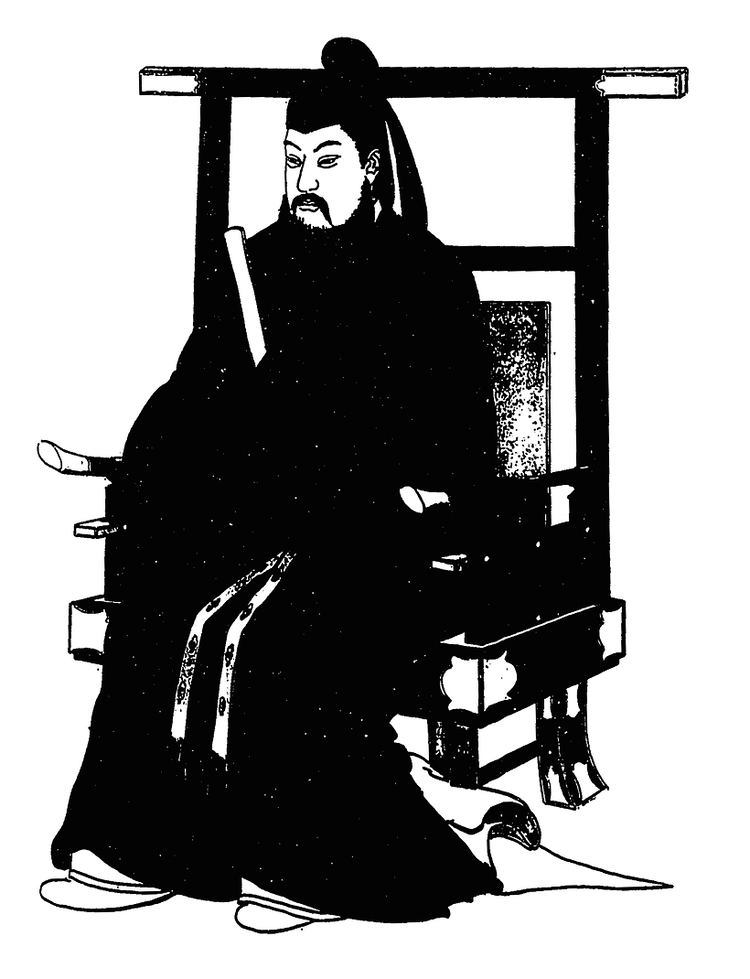Predecessor Saimei Successor Kobun | Name Emperor Tenji Siblings Emperor Tenmu | |
 | ||
Reign 661–668 (regency)668–672 Burial Yamashina no misasagi (Kyoto) Issue Princess Ota, Empress Jito and Prince Takeru by Ochi-no-iratsumePrincess Minabe and Empress Gemmei by Mei-no-iratsumePrincess Yamanobe by Hitachi-no-iratsumePrincess Asuka and Princess Niitabe by Tachibana-no-iratsumePrince Shiki by Michinokimi-no-iratsumeEmperor Kobun by Yakako-no-iratsumePrince Kawashima, Princess Oe and Princess Izumi by Shikobuko-no-iratsumePrincess Minushi by Kurohime-no-iratsume Died January 7, 672 AD, Shiga Prefecture, Japan Children Empress Jito, Emperor Kobun, Empress Genmei Parents Empress Kogyoku, Emperor Jomei Grandchildren Prince Nagaya, Prince Toneri, Emperor Monmu Similar People | ||
The Jinshin War | History of Japan 23
Emperor Tenji (天智天皇, Tenji-tennō, 626 – January 7, 672), also known as Emperor Tenchi, was the 38th emperor of Japan, according to the traditional order of succession.
Contents
- The Jinshin War History of Japan 23
- Traditional narrative
- Events of Tenjis life
- Events of Tenjis reign
- Death of the emperor
- Poetry
- Kugyo
- Non neng period
- Consorts and children
- Popular culture
- References
Tenji's reign spanned the years from 661 through 672.
Traditional narrative
He was the son of Emperor Jomei, but was preceded as ruler by his mother Empress Saimei.
Prior to his accession, he was known as Prince Naka-no-Ōe (中大兄皇子, Naka-no-Ōe no Ōji).
Events of Tenji's life
As prince, Naka no Ōe played a crucial role in ending the near-total control the Soga clan had over the imperial family. In 644, seeing the Soga continue to gain power, he conspired with Nakatomi no Kamatari and Soga no Kurayamada no Ishikawa no Maro to assassinate Soga no Iruka in what has come to be known as the Isshi Incident. Although the assassination did not go exactly as planned, Iruka was killed, and his father and predecessor, Soga no Emishi, committed suicide soon after. Following the Isshi Incident, Iruka's adherents dispersed largely without a fight, and Naka no Ōe was named heir apparent. He also married the daughter of his ally Soga no Kurayamada, thus ensuring that a significant portion of the Soga clan's power was on his side.
Events of Tenji's reign
Naka no Ōe reigned as Emperor Tenji from 661 to 672.
Tenji was particularly active in improving the military institutions which had been established during the Taika reforms.
Death of the emperor
Following his death in 672, there ensued a succession dispute between his fourteen children (many by different mothers). In the end, he was succeeded by his son, Prince Ōtomo, also known as Emperor Kōbun, then by Tenji's brother Prince Ōama, also known as Emperor Tenmu. Almost one hundred years after Tenji's death, the throne passed to his grandson Emperor Kōnin.
Post-Meiji chronologyThe actual site of Tenji's grave is known. This emperor is traditionally venerated at a memorial Shinto shrine (misasagi) at Yamashina-ku, Kyoto.
The Imperial Household Agency designates this location as Tenji's mausoleum. It is formally named Yamashina no misasagi.
Poetry
The Man'yōshū includes poems attributed to emperors and empresses; and according to Donald Keene, evolving Man'yōshū studies have affected the interpretation of even simple narratives like "The Three Hills." The poem was long considered to be about two male hills in a quarrel over a female hill, but scholars now consider that Kagu and Mimihashi might be female hills in love with the same male hill, Unebi. This still-unresolved enigma in poetic form is said to have been composed by Emperor Tenji while he was still Crown Prince during the reign of Empress Saimei:
One of his 31-letters poems was chosen by Fujiwara no Teika as the first in the very popular anthology Hyakunin Isshu.
After his death, his wife, Empress Yamato wrote a song of longing about her husband.
Kugyo
The top court officials (公卿, Kugyō) during Emperor Tenji's reign included:
Prince Ōtomo (Ōtomo-shinnō) was the favorite son of Emperor Tenji; and he was also the first to be accorded the title of Daijō-daijin.
Non-nengō period
The years of Tenji's reign are not linked by scholars to any era or nengō. The Taika era innovation of naming time periods – nengō – languished until Mommu reasserted an imperial right by proclaiming the commencement of Taihō in 701.
In this context, Brown and Ishida's translation of Gukanshō offers an explanation about the years of Empress Jitō's reign which muddies a sense of easy clarity in the pre-Taiho time-frame:
Consorts and children
Empress: Yamato Hime no Ōkimi (倭姫王) (?–?), daughter of Prince Furuhito-no-Ōe (son of Emperor Jomei).
Hin: Soga no Ochi-no-iratsume (蘇我遠智娘) (d. c. 651), daughter of Soga no Kura-no-yamada no Ishikawa-no-maro
Hin: Soga no Mei-no-iratsume (蘇我姪娘), daughter of Soga no Kura-no-yamada no Ishikawa-no-maro
Hin: Soga no Hitachi-no-iratsume (蘇我常陸娘), daughter of Soga no Akae
Hin: Abe no Tachibana-no-iratsume (阿部橘娘) (d. 681), daughter of Abe no Kurahashi-maro
Court lady: Oshinumi no Shikibuko-no-iratsume (忍海色夫古娘)
Court lady: Koshi-no-michi no Iratsume (越道伊羅都売)
Court lady: Kurikuma no Kurohime-no-iratsume (栗隈黒媛娘)
Court lady (Uneme): Yakako-no-iratsume, a lower court lady from Iga (伊賀采女宅子娘) (Iga no Uneme)
